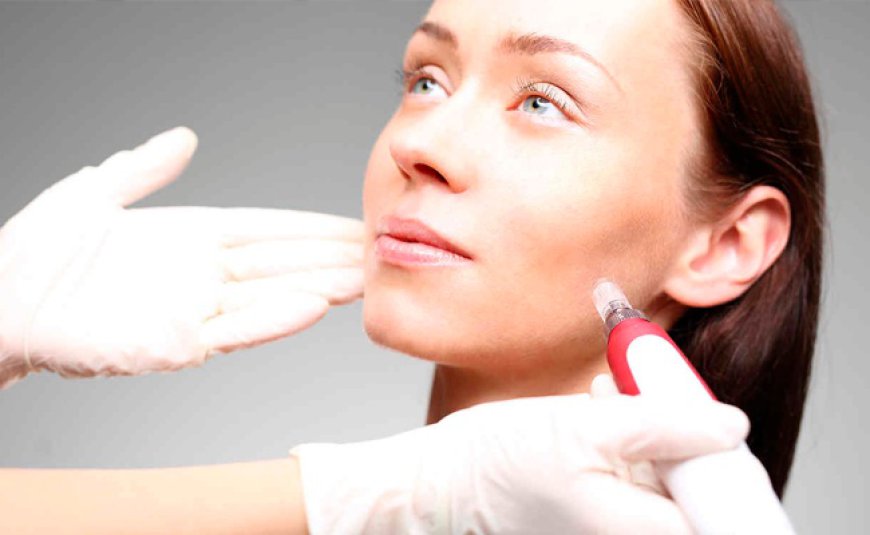Microneedling Therapy for Face: Transform Your Skin Naturally
Microneedling therapy for the face usually begins with the application of a topical numbing cream to ensure a comfortable experience.

In the world of skincare, there are many treatments that promise to rejuvenate and transform your complexion. One such treatment that has been gaining significant popularity is microneedling therapy for face. This minimally invasive procedure is known for its ability to naturally stimulate collagen production, enhance skin texture, and address a variety of skin concerns. If you’re seeking a solution that rejuvenates your skin without the use of harsh chemicals or invasive surgery, microneedling may be the perfect option for you.
What is Microneedling Therapy for the Face?
Microneedling therapy for the face starts with applying a topical numbing cream to ensure comfort during the procedure. Once the skin is numbed, a microneedling device, resembling a pen or dermaroller, is carefully glided over the targeted area.
How Does Microneedling Therapy Work?
Microneedling therapy for the face usually begins with the application of a topical numbing cream to ensure a comfortable experience. Once the skin is numb, a microneedling device, resembling a pen or dermaroller, is carefully rolled or stamped over the treatment area. This device features ultra-fine needles that create controlled micro-injuries in the outermost layer of the skin.
As your body begins to heal these tiny punctures, it starts to produce more collagen and elastin, two key proteins responsible for skin firmness, elasticity, and smoothness. Collagen production typically declines with age, leading to wrinkles, fine lines, and sagging skin. By stimulating the body’s collagen production, microneedling therapy for the face helps counteract these effects, resulting in a more youthful and vibrant appearance.
Benefits of Microneedling Therapy for Face
Microneedling offers a variety of benefits for the skin, making it a popular choice for individuals seeking natural, effective skin rejuvenation. Some of the key benefits of microneedling therapy for the face include:
1. Improved Skin Texture and Tone
Microneedling helps to refine the skin’s surface by reducing the appearance of rough texture and promoting smoother, more even skin. This is especially beneficial for those with large pores or textured skin caused by acne scarring.
2. Reduced Fine Lines and Wrinkles
The increased collagen production stimulated by microneedling helps to plump the skin, diminishing the appearance of fine lines and wrinkles. It’s particularly effective for targeting areas like the forehead, around the eyes, and the mouth, where wrinkles tend to form due to natural aging.
3. Decreased Acne Scarring
For individuals struggling with acne scars, microneedling therapy can be a game-changer. The tiny punctures in the skin help to break up scar tissue, encouraging the growth of healthy, undamaged skin. Over time, this process can significantly reduce the visibility of acne scars, leading to a more even skin tone.
4. Minimized Hyperpigmentation
Microneedling can also improve the appearance of hyperpigmentation, such as sun spots, melasma, and age spots. By stimulating the skin’s healing response, it encourages the regeneration of new skin cells, which can help fade discoloration and provide a brighter, more even complexion.
5. Enhanced Absorption of Skincare Products
Microneedling creates tiny channels in the skin, enhancing the absorption of serums and skincare products. This allows topical treatments like hydrating serums or growth factors to penetrate deeper into the skin, leading to more effective results.
Who Can Benefit from Microneedling?
Microneedling therapy is generally safe and effective for all skin types. It’s an excellent option for individuals who want to improve their skin’s overall appearance without resorting to more invasive procedures. People with concerns like acne scars, fine lines, large pores, or uneven skin tone can all benefit from the treatment.
Some individuals should avoid microneedling, particularly those with active skin infections, eczema, or rosacea in the treatment area. Consulting a dermatologist or licensed skincare professional is essential to determine if microneedling is suitable for you.
What to Expect During and After Microneedling Therapy
During the procedure, most people experience minimal discomfort due to the application of numbing cream beforehand. The treatment typically lasts between 30 minutes to an hour, depending on the size of the area being treated. After the session, your skin may appear slightly red and feel like a mild sunburn for a day or two. This is a natural part of the healing process as your skin regenerates and collagen production increases.
How Often Should You Get Microneedling for the Face?
The frequency of microneedling therapy for the face will depend on your skin’s needs and the specific concerns you’re addressing. For maintenance, treatments may be done every few months to continue to support collagen production and keep the skin looking its best.
Conclusion
Microneedling therapy for the face offers a natural, non-surgical approach to improving the appearance of your skin. By stimulating collagen production and promoting skin regeneration, this procedure can help reduce fine lines, wrinkles, acne scars, and uneven skin tone. Whether you’re seeking to rejuvenate your complexion or target specific skin concerns, microneedling is a safe and effective treatment with minimal downtime and noticeable results. If you’re considering this therapy, it’s always best to consult with a qualified skincare professional to determine the best plan for your skin’s needs.
